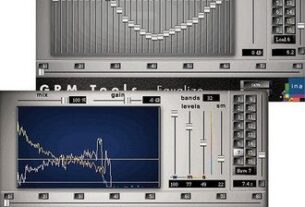Are you tired of getting stuck in mud, sand, or other tricky terrains while on an off-road adventure? Do you want to improve your vehicle’s traction and stability without damaging its tires or rims? If so, then you need an air down tool – a handy device that allows you to deflate your tires quickly and precisely. In this comprehensive guide, we will explore everything you need to know about air down tools, including their benefits, types, features, and usage tips. Let’s dive in!
Why You Need an Air Down Tool for Off-Roading
Off-roading is a thrilling and challenging activity that requires specific skills, equipment, and mindset. One of the critical factors that determine your success or failure in off-roading is your vehicle’s traction and stability. When your vehicle’s tires are fully inflated, they have less surface area in contact with the ground, which reduces their grip and increases their bouncing and sliding on uneven surfaces. Moreover, overinflated tires can puncture or burst when exposed to sharp rocks or debris.
On the other hand, when you deflate your tires to a lower pressure level, they spread out more evenly on the ground, increasing their footprint and gripping power. Lower tire pressure also absorbs shock better, making your ride smoother and safer. However, lowering tire pressure manually is time-consuming and imprecise, as you need to use a pressure gauge and release valve repeatedly until you reach the desired level.
This is where an air down tool comes into play. An air down tool is a device that attaches to your tire valve stem and releases air from all four tires at once within seconds. With an air down tool, you can lower your tire pressure to a specific level according to your off-road conditions and preferences. This not only enhances your vehicle’s performance but also saves you time and effort.
Types of Air Down Tools
There are mainly two types of air down tools: manual and automatic. Here is a brief description of each type:
1. Manual Air Down Tool: A manual air down tool is a simple device that resembles a tire pressure gauge. It has a built-in valve stem connector and a release button that allows you to depressurize your tires one by one. You need to read the tire pressure with a separate gauge and adjust it manually until it reaches the desired level.
Manual air down tools are affordable, portable, and easy to use. They require no power source or batteries and can fit in your glove compartment or backpack. However, they may not be as accurate as other types, as you need to estimate the pressure level based on your experience and judgment.
2. Automatic Air Down Tool: An automatic air down tool is a more advanced device that uses electronics and sensors to deflate all four tires simultaneously to a specific pressure level. It connects to your vehicle’s battery or cigarette lighter port and displays the current and target pressure levels on an LCD screen. You can set the target pressure level using buttons or presets, and the tool will stop deflating when it reaches the set value.
Automatic air down tools are more precise, efficient, and convenient than manual ones. They save you time and energy by eliminating the need for multiple readings and adjustments. They also have additional features such as audible alerts, LED lights, and automatic shut-off when finished.
Features to Look for in an Air Down Tool
When shopping for an air down tool, there are several features you should consider to ensure its quality, durability, and usability. Here are some of them:
1. Material: The material of an air down tool should be durable, corrosion-resistant, and lightweight. Most air down tools are made of brass or aluminum alloy, which are robust and long-lasting.
2. Valve Stem Connector: The valve stem connector of an air down tool should be compatible with various types of tire valves, including Schrader and Presta. It should also have a secure and tight fit to prevent air leaks or damage to the valve stem.
3. Pressure Range: The pressure range of an air down tool should cover a wide spectrum of levels, from 10 PSI to 50 PSI or more. It should also have clear markings or indicators that show the current and target pressure levels.
4. Speed: The speed of an air down tool depends on its type and design. Manual air down tools are generally slower than automatic ones, as they require you to release each tire separately. Automatic air down tools vary in speed depending on their motor power and efficiency.
5. Size and Weight: The size and weight of an air down tool affect its portability and storage. A compact and lightweight air down tool is easier to carry around and store than a bulky and heavy one.
6. Accessories: Some air down tools come with additional accessories such as carrying cases, pressure gauges, adapters, or hoses. These accessories can enhance your user experience and versatility.
How to Use an Air Down Tool for Off-Roading
Now that you know why you need an air down tool and what features to look for, let’s see how to use it for off-roading. Here are the steps:
1. Choose the Right Pressure Level: Before using your air down tool, you need to decide what pressure level suits your off-road conditions and vehicle type. Generally, the lower the pressure, the better the traction and flotation on soft or loose surfaces such as sand, mud, or snow.
However, lower pressure also means less stability and control on hard or rocky surfaces such as trails or bumpy roads. You may need to experiment with different pressure levels until you find the sweet spot for your situation.
2. Attach the Air Down Tool: Once you have determined the ideal pressure level, attach your air down tool to all four tire valve stems. Make sure that the connector fits snugly and securely without any air leaks.
3. Depressurize the Tires: Press the release button or trigger of your air down tool to start deflating all four tires at once. Keep an eye on the LCD screen or pressure gauge to monitor the current and target pressure levels.
4. Check the Pressure and Adjust if Necessary: After a few seconds, stop the air down tool and check the pressure of each tire with a separate gauge. If any tire is above or below the target pressure level, adjust it manually using a valve stem core tool or compressor.
5. Store Your Air Down Tool: Once you have finished using your air down tool, detach it from the tire valve stems and store it in a safe and dry place. Avoid exposing it to extreme temperatures or humidity, which can damage its components or affect its accuracy.
Conclusion
An air down tool is a must-have accessory for any off-road enthusiast who wants to enhance their vehicle’s performance and safety. Whether you prefer a manual or automatic type, make sure to choose one that meets your needs and preferences regarding material, valve stem connector, pressure range, speed, size and weight, and accessories.
By following our guide on how to use an air down tool for off-roading, you can enjoy smoother rides, better traction, and fewer risks of getting stuck or damaged. Remember to always check your tire pressure before and after each adventure and adjust it accordingly. Happy off-roading!
References:
1. https://www.offroadxtreme.com/features/air-down-tools-and-their-importance-for-off-road-trips/
2. https://www.fourwheeler.com/how-to/wheels-tires/1906-airing-down-101-how-to-air-down-tires-for-off-road-traction/
3. https://www.tirebuyer.com/education/how-to-air-down-tires-for-off-road-adventures
4. https://www.trucktrend.com/how-to/wheels-tires/1701-airing-down-your-tires-for-the-trail/
5. https://en.wikipedia.org/wiki/Tire-pressure_gauge




